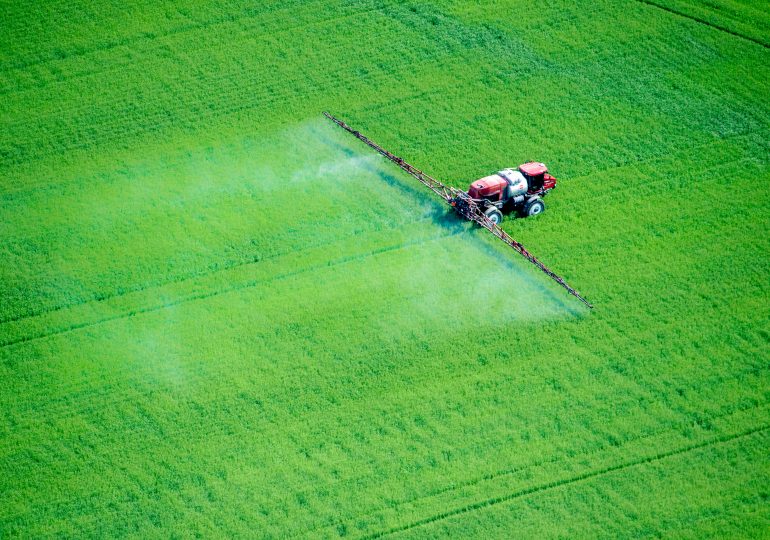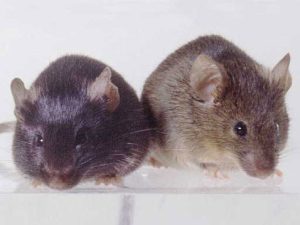The use of pesticides in agriculture has always meant managing a tricky balance—protecting the harvest and making sure essential produce gets to market, while guarding against the possibility that at least some of that produce carries toxic chemicals. This month, things got more complicated —at least as environmentalists see it.
On Nov. 18, the Environmental Protection Agency (EPA) approved the use of the pesticide isocycloseram on golf courses, institutional settings, and decorative lawns, as well as on a host of crops, including cereal grains, dozens of types of peas and beans, tomatoes, oranges, almonds, and more. The move comes just two weeks after the agency approved another pesticide, cyclobutrifluram, for similarly wide use.
[time-brightcove not-tgx=”true”]
The particular problem with these pesticides is that both of them contain toxic PFAS, short for per- and polyfluoroalkyl substances. PFAS are more colloquially known as “forever chemicals,” because that pretty much describes how long they linger in the environment. While they don’t remain in the body quite as persistently, according to a 2020 study in the Journal of the National Cancer Institute, PFAS are present in the blood serum of 98% of Americans tested. The chemicals do get purged, principally in urine, but continued environmental exposure can steadily replace what has been eliminated.
PFAS have been linked by the EPA itself to an increased risk of a host of health effects, including decreased fertility, hypertension in pregnant people, increased risk of certain cancers (especially kidney cancer), developmental delays in children, hormonal irregularities, elevated cholesterol, reduced effectiveness of the immune system, and more.
Read more: All The Stuff in Your Home That Might Contain PFAS ‘Forever Chemicals’
The approval of the two chemicals is part of a larger pattern by the Trump Administration to broaden the use of PFAS-containing pesticides on industrial and private farms across the country. Under the Biden Administration, the EPA approved just one such pesticide, late in the then-president’s single term—a chemical known as fluazaindolizine, which was cleared to be used on foods such as carrots, squash, tomatoes, eggplant, potatoes, oranges, peaches, almonds, and grapes. The Trump Administration has already doubled that approval rate in its first year in office, and is looking to give the thumbs-up to a total of five PFAS pesticides before the year is out. That could spell trouble.
“The problem for a lot of these chemicals is that they haven’t really been fully studied,” says Erik Olson, pesticide expert and senior attorney at the Natural Resources Defense Council. “We do know that some of these forever chemicals are carcinogens. Some of them interfere with reproduction, some of them interfere with the immune system. They tend to be exquisitely toxic at very low doses—at parts per quadrillion or parts per trillion. So the idea that we’re spraying these chemicals on our food is something we worry about.”
Worse, there is no firm definition of exactly what a PFAS is—at least in the United States. The Paris-based Organization for Economic Cooperation and Development (OECD), which works with 38 member nations including the U.S. to foster international cooperation and economic growth, defines PFAS as industrial chemicals that have at least one fully fluorinated carbon atom—which is a carbon atom with two or three fluorine atoms attached to it. There are about 15,000 species of chemicals that meet that standard. But the EPA has pushed back, broadening the definition to two fully fluorinated carbon atoms. “The final definition does not include substances that only have a single fluorinated carbon,” the agency wrote in its formal report in 2023—during Joe Biden’s presidency. That change is worrying.
“It’s an enormous decrease in the number of chemicals that are subject to regulation as PFAS,” says Nathan Donley, environmental health science director at the Tucson-based Center for Biological Diversity. “We’re talking about defining away over 10,000 chemicals. The OECD definition was a definition agreed upon by scientists. Now, the EPA has come up with a regulatory definition that in my opinion, ignores the science and is more designed to make [the chemical industries’] lives easier.”
Read more: Companies Knew the Dangers of PFAS ‘Forever Chemicals’—and Kept Them Secret
It’s no wonder industry is getting even more breaks on PFAS than it got during the Biden presidency, given that a small group of their own are now running the pesticide show at the EPA. As The New York Times and others have reported, in June President Trump appointed Kyle Kunkler, a former high ranking lobbyist for the soybean industry, as deputy assistant administrator of the EPA, in charge of formulating the agency’s policies on pesticides. Joining Kunkler are Nancy Beck and Lynn Dekleva, who were both once directors at the American Chemistry Council, a powerful trade group. Within a month of Kunkler’s taking charge, the EPA sought to lift restrictions on a problematic herbicide that worked against weeds in the field in which it was applied perfectly well, but also had a nasty tendency of drifting to neighboring farms, killing not weeds but crops.
“The pesticide office of the EPA right now is being run by the chemical industry,” says Donley. “They are in charge, and unfortunately, their priorities are what goes, and that puts people in danger.”
“What we’re starting to see is a clear indication that they are very friendly to their former employers and have swung the door open, allowing a lot of toxic chemicals [to be used],” says Olson.
The EPA declined to comment for this story and instead referred TIME to a post on X from EPA Administrator Lee Zeldin denying that single fluorinated compounds are PFAS, a position at odds with the scientific consensus.
Read more: The Challenge of Removing Toxic PFAS ‘Forever Chemicals’ from Drinking Water
For consumers who might be worried about what’s in their food, there are limited steps they can take to avoid PFAS from pesticides. Choosing organic fruits and vegetables can certainly help, but it’s not a panacea, since PFAS have seeped into soil and streamed into the water supply and are readily taken up by growing crops. The same is true if you choose to plant your own backyard garden. One study out of North Carolina State University found that PFAS were particularly high in water-rich fruits and vegetables like watermelon and tomatoes. You can’t see, smell, or taste PFAS, so short of having your food laboratory tested, there’s no way to tell what, if any, toxins you’re consuming.
According to the EPA, children are especially vulnerable because they drink more water, breathe more air, and eat more food per pound of body weight than adults do. Breast milk may carry PFAS and pass it onto nursing babies.
Whoever is running the EPA and whatever their decisions are, PFAS-tainted pesticides will remain a daunting challenge for any administration. Last year, Donley and his colleagues at the Center for Biological Diversity published a paper that sought to quantify the chemical load sprayed on crops in the U.S. over the course of a year, and came up with an astonishing number—on the order of 30 million pounds annually. In California alone, according to the Environmental Working Group, the figure is 2.5 million pounds.
“That is just an enormous amount of pollution that is not going away anytime soon,” Donley says. ”It’s not you or I who are going to be paying the price. It’s our kids and their kids who are going to be saddled with pollution that never goes away, and that’s the ultimate sin.”
Leave a comment






